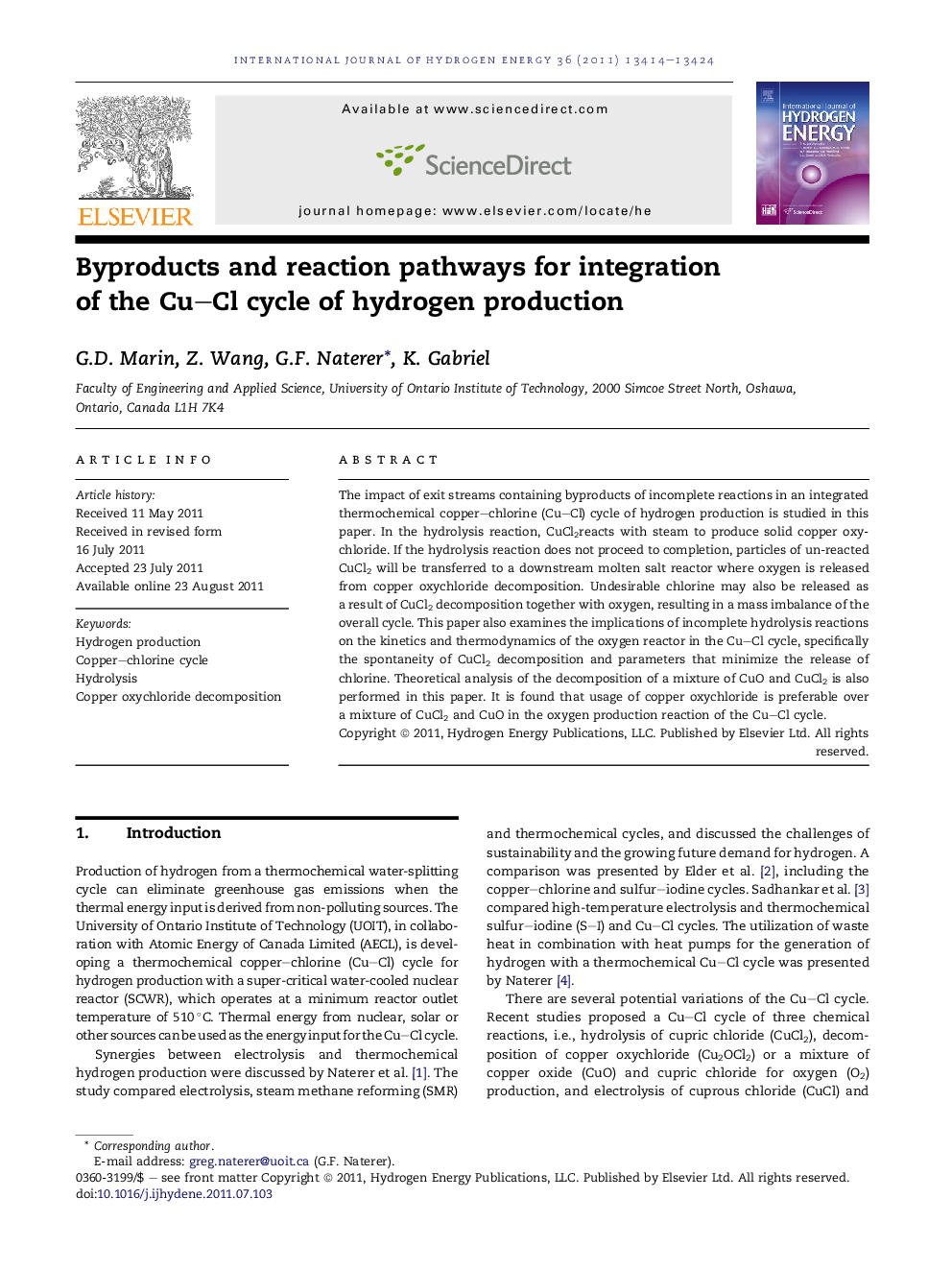| Article ID | Journal | Published Year | Pages | File Type |
|---|---|---|---|---|
| 1278683 | International Journal of Hydrogen Energy | 2011 | 11 Pages |
The impact of exit streams containing byproducts of incomplete reactions in an integrated thermochemical copper–chlorine (Cu–Cl) cycle of hydrogen production is studied in this paper. In the hydrolysis reaction, CuCl2reacts with steam to produce solid copper oxychloride. If the hydrolysis reaction does not proceed to completion, particles of un-reacted CuCl2 will be transferred to a downstream molten salt reactor where oxygen is released from copper oxychloride decomposition. Undesirable chlorine may also be released as a result of CuCl2 decomposition together with oxygen, resulting in a mass imbalance of the overall cycle. This paper also examines the implications of incomplete hydrolysis reactions on the kinetics and thermodynamics of the oxygen reactor in the Cu–Cl cycle, specifically the spontaneity of CuCl2 decomposition and parameters that minimize the release of chlorine. Theoretical analysis of the decomposition of a mixture of CuO and CuCl2 is also performed in this paper. It is found that usage of copper oxychloride is preferable over a mixture of CuCl2 and CuO in the oxygen production reaction of the Cu–Cl cycle.
►The exit streams containing byproducts of incomplete reactions in the copper–chlorine(Cu–Cl) cycle are examined in this paper. ►The implications of incomplete hydrolysis reactions on the kinetics and thermodynamics of the oxygen reactor are reported. ►The decomposition of Cu2OCl2, as well the mixture of CuO and CuCl2, is studied experimentally.
